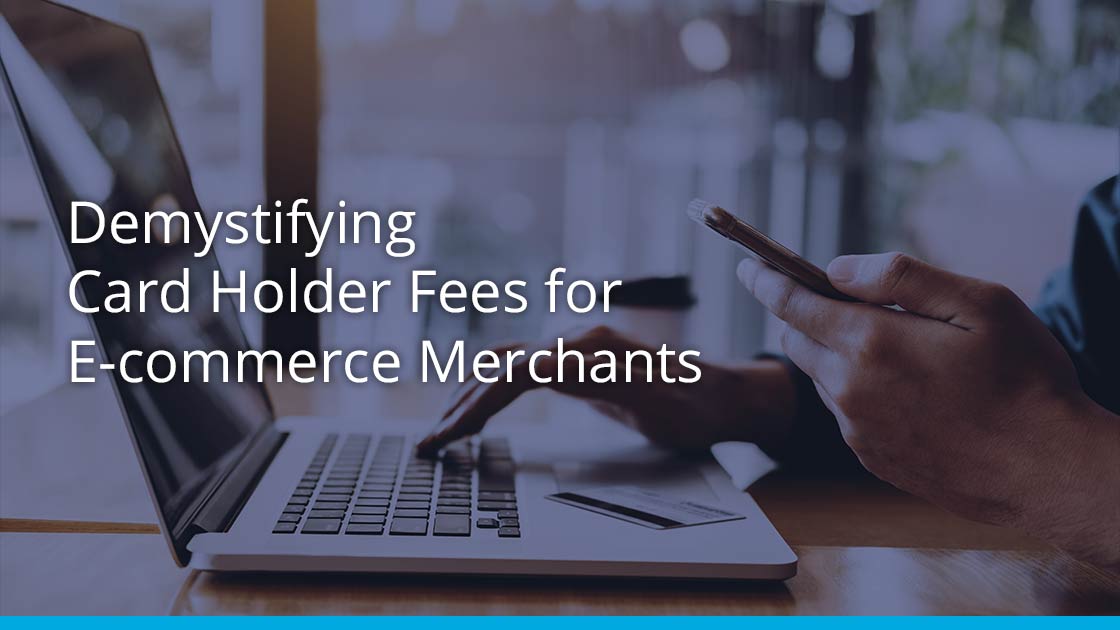Merchants that process credit cards face many challenges in today’s payments ecosystem, but understanding the different types of credit card fees associated with consumer payments may top the list even for the savviest of merchants. After all, these fees can eat into profits.
What is the difference between convenience fees, surcharge fees, or service fees? How do the rules adopted by each of the credit card brands differ? Can these fees be charged to cardholders to reduce payment processing costs for merchants?
Fiserv’s comprehensive guide – an in-depth analysis of the various fees and how the rules for charging can vary by card brand – clears up any confusion.
Convenience Fees: Convenience fees are charges imposed on customers for the added convenience or flexibility provided by a particular service or transaction. These fees are typically applied when customers choose alternative payment methods or opt for expedited services, such as online platforms or mobile apps. For example, when purchasing tickets online, you may encounter a convenience fee for the ability to select your seats or print the tickets at home instead of picking them up in person. Additionally, paying your electric, water, gas, or sewer bills via an online web portal or mobile phone instead of going to your local municipality may result in a convenience fee.
Convenience fees are legal in all 50 states but must be clearly communicated at the point of sale for both card present and e-commerce transactions. Convenience fees can be a fixed dollar amount or a percentage of the transaction amount, usually 2% to 3%.
Surcharge Fees: Surcharge fees, also known as transaction fees or processing fees, are additional charges applied to a transaction to cover the costs associated with facilitating that transaction. These fees are commonly encountered in various industries, such as banking, credit card processing, and online transactions. Surcharge fees can help businesses cover expenses related to payment processing systems, maintaining infrastructure, or managing the associated administrative tasks.
Examples of surcharges include ATM fees, fuel surcharges, broadcast TV surcharges, disposal fees, handling fees, hazardous waste fees, filing fees, tips and gratuities, processing, or checkout fees.
The rules surrounding surcharge fees can be complicated, as this program is regulated and prohibited in certain states. The best way to validate surcharging rules is to review your state rules and regulations by card brand to ensure adherence.
Service Fees: Merchants collect service fees to pay for services that relate to a product or service that is being purchased. These fees are typically associated with services provided by companies or organizations, such as booking fees for travel or event tickets, subscription fees for online platforms or streaming services, or administrative fees for processing applications or requests. Service fees are intended to cover the costs incurred by the service provider in delivering the service or to generate additional revenue.
The service fee program is restricted to merchants within specific merchant category codes (MCC) under education and government areas, and the rules for processing this type of fee vary by card brand. Common MCC codes where service fees apply include 4900 and 8999 for Government and Utilities.
Cash Discount: A cash discount is a reduction in the purchase price offered to customers who pay with cash instead of using alternative payment methods, such as credit cards or electronic transfers. Businesses may incentivize cash payments by offering a discount to encourage customers to avoid transaction fees associated with other payment methods. The cash discount represents a reduction in price for customers while allowing the business to save on the fees typically incurred with card processing or other payment services.
These fees can provide additional revenue, increased profit margins, and a sustainable business model while offsetting the costs associated with payment gateway fees, technology investments, and the convenience of providing electronic payment options.
Embedded Payments
As technology, e-commerce and globalization become more intertwined, today’s merchants, processing companies, and consumers alike expect a seamless payment process that increases connectivity and speed for sales transactions. As a result, embedded payments have become an increasingly popular payment option.
“In 2027, revenues from embedded financial services, which includes embedded payments, is expected to exceed $183 billion globally, up from $65 billion in 2022, according to Juniper Research. That growth will be driven largely by non-financial businesses, such as retailers, manufacturers, utilities, and business service providers incorporating embedded-finance options into their apps or digital products. The options will usually be woven into the checkout process, according to Juniper.”
Embedded payments are built directly into the software systems that businesses use to conduct commerce. By using a payment facilitator, independent software vendors (ISVs) can allow merchants to process payments easily and securely within their core software application, without having to worry about the technical aspects of payment processing or the various card holder fees associated with online payments. The popularity of this model is driven by a high demand for streamlined processes, increased agility and lower risk, and the creation of new revenue streams through a controlled user experience.
Want to learn more about managing card fees and Bluefin’s PayFac Model powered by Payfactory? Contact us today.








